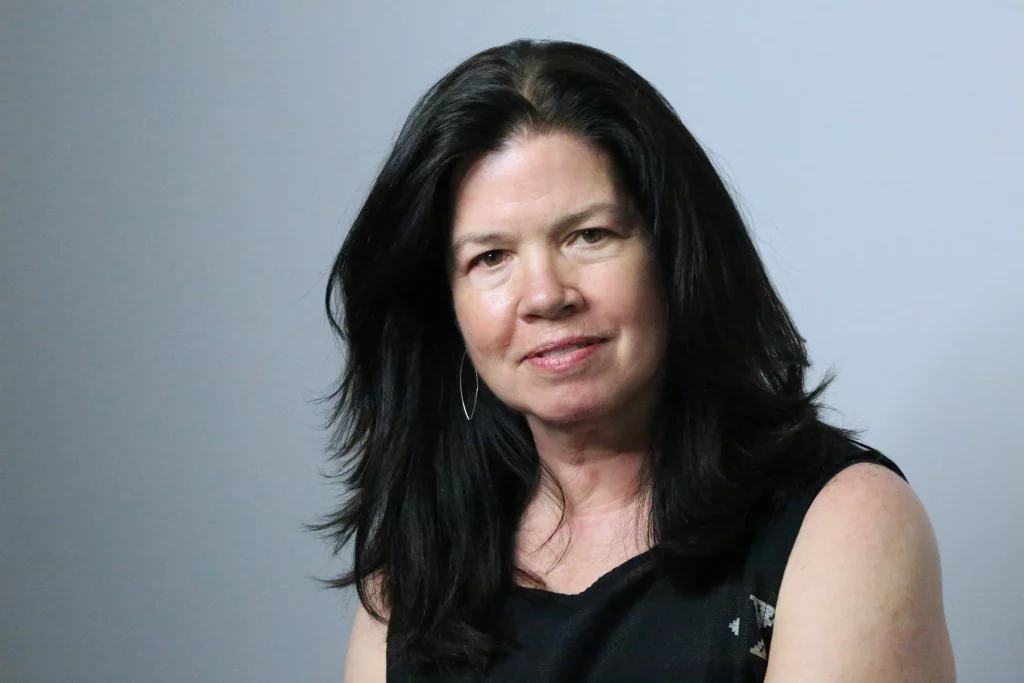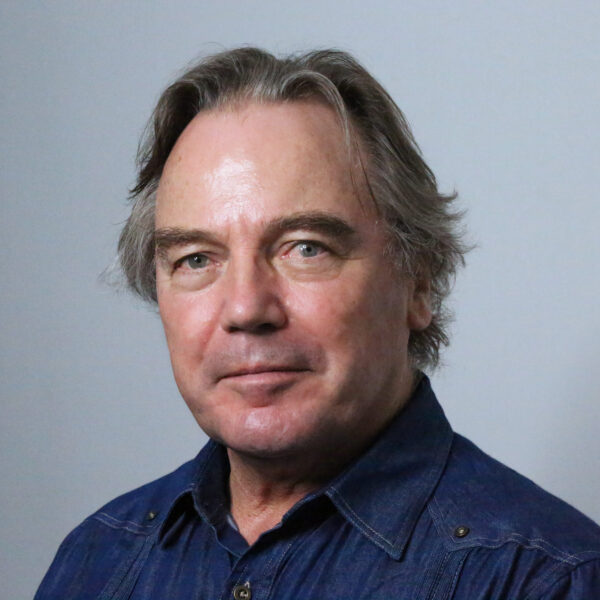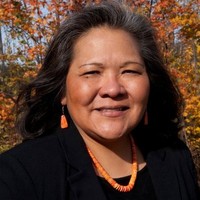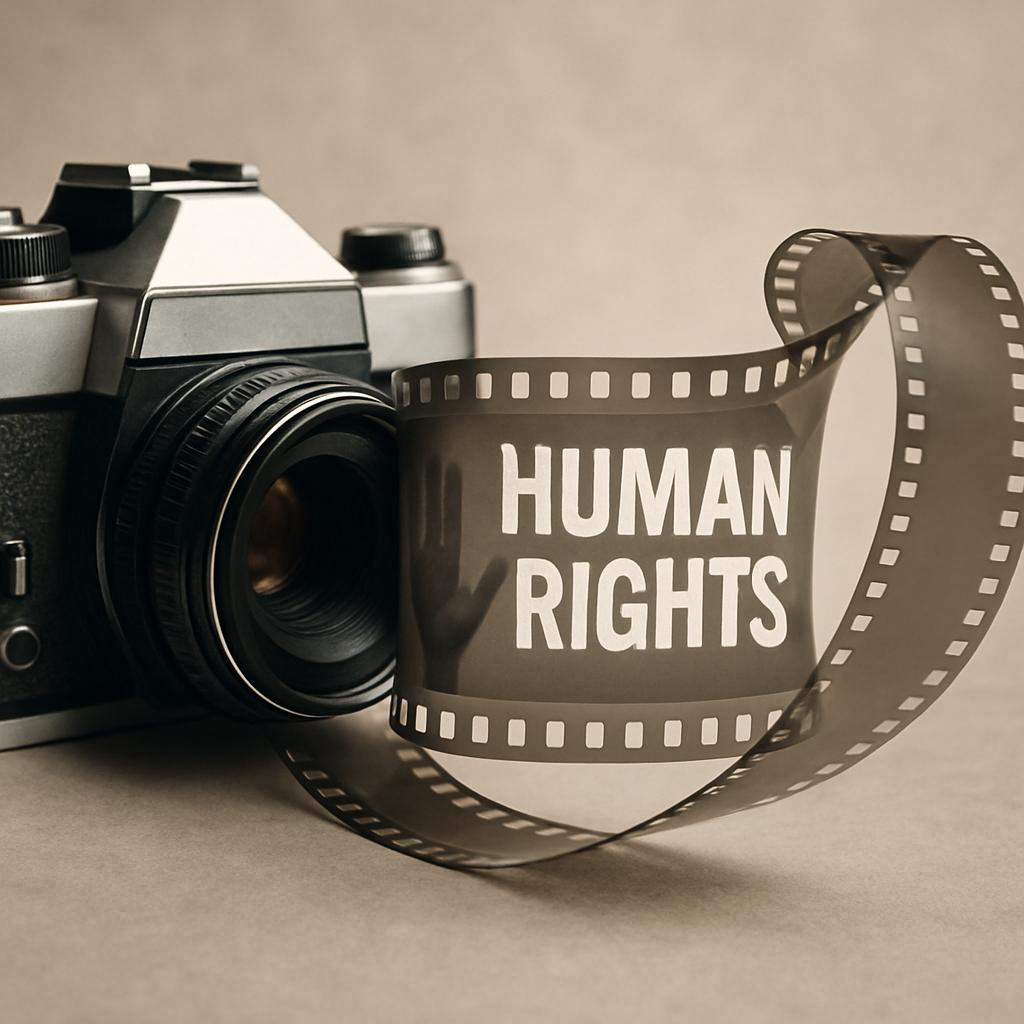Chapter 20: Documentary & Human Rights: Story, Evidence, and Advocacy
Chapter 20: Documentary & Human Rights: Story, Evidence, and Advocacy
Companion Website by: Claire Gegenheimer
TABLE OF CONTENTS:
- Chapter Summary
- More about the Participants
- Organizations from the Chapter
- Suggested Resources
- Additional Reflection
CHAPTER SUMMARY:
This chapter is a compelling examination of how documentary media serves as a powerful tool for human rights advocacy, historical memory, and community resilience. It bridges storytelling, activism, and legal accountability, showing how narratives not only inform but mobilize. By engaging filmmakers, activists, and educators, the chapter emphasizes how multimodal storytelling—across film, digital media, and participatory methods—can catalyze systemic change, amplify marginalized voices, and contribute to justice efforts.
MORE ABOUT THE PARTICIPANTS:

Pamela Yates is an award-winning documentary filmmaker and human rights activist, celebrated for her films on social justice in Latin America. Her landmark film When the Mountains Tremble (1983) won the Special Jury Award at the Sundance Film Festival, while Granito: How to Nail a Dictator (2011) was used as key evidence in the historic genocide trial of Guatemalan dictator Efraín Ríos Montt. Yates is the co-founder and Creative Director of Skylight, a nonprofit media organization that produces documentaries and digital tools to advance human rights and justice worldwide.
Paco de Onís is a documentary film producer and human rights advocate known for his powerful storytelling on social justice issues in Latin America. As Executive Director and Executive Producer of Skylight, de Onís has produced award-winning documentaries including State of Fear: The Truth About Terrorism—recipient of the 2006 Overseas Press Club Award for Best Reporting on Latin America. His other acclaimed works include Granito: How to Nail a Dictator, 500 Years, Rebel Citizen, Disruption, and The Reckoning. Through Skylight’s initiatives like SolidariLabs, he builds global networks of filmmakers, artists, and activists, using media as a catalyst for human rights and social change.


Palika Makam is a media activist and digital strategist committed to advancing racial, immigrant, and criminal justice through storytelling. As the former U.S. Program Coordinator at WITNESS, she led the Eyes on ICE initiative, equipping immigrant communities with tools to document abuses by ICE and Border Patrol for advocacy and legal defense. From Ferguson to Palestine, Makam has trained communities around the world to harness video and storytelling as powerful tools against police brutality and for the defense of human rights
Brenda Manuelito is a cultural anthropologist, educator, and media producer dedicated to Indigenous storytelling, healing, and community empowerment. She is the co-founder and Education Director of nDigiDreams, a woman-owned, Indigenous-focused consulting and training company specializing in digital storytelling to promote health, education, policy, and cultural preservation.


Dr. Carmella Rodriguez is a media producer, instructional designer, and educator dedicated to empowering Indigenous communities through digital storytelling. As co-founder of nDigiDreams, she has co-created over 1,500 digital stories across the United States, collaborating with more than 80 tribes to promote healing, cultural preservation, and social justice.
ORGANIZATIONS FROM THE CHAPTER:
Skylight Pictures
Skylight Pictures: Skylight is a nonprofit human rights media organization based in New York, which has been a pioneering force in the field of documentary filmmaking for social justice. Co-founded by Pamela Yates and Paco de Onis, Skylight is distinguished by its deep commitment to long-term, movement-centered engagement and the use of film as a tool for advocacy, legal accountability, and historical memory. Rather than operating as a traditional production company, Skylight approaches filmmaking as a form of activism, maintaining close collaborations with civil society organizations, human rights groups, and Indigenous communities.
When the Mountains Tremble (1983): This documentary explores the political and social unrest in Guatemala during the early 1980s, focusing on the Indigenous Maya people’s struggle against military oppression. It features firsthand accounts of government violence and resistance, narrated by Nobel Peace Prize winner Rigoberta Menchú. The film highlights the role of U.S. intervention and the fight for human rights in Latin America.
Granito: How to Nail a Dictator (2011): A sequel of sorts to When the Mountains Tremble, Granito shows how archival footage from that earlier film became key evidence in building a genocide case against former Guatemalan dictator Efraín Ríos Montt. The documentary follows human rights activists, lawyers, and filmmakers as they seek justice decades later.
500 Years (2017): This film documents the historic trial of Ríos Montt for genocide, the growing power of Guatemala’s Indigenous population, and the 2015 popular uprising that ousted President Otto Pérez Molina. Through the lens of Indigenous resistance, it traces how collective action challenged a corrupt political system.
WITNESS Media Lab
WITNESS is a Brooklyn-based human rights organization that empowers activists and grassroots communities to use video and technology for social change, with a focus on safe, ethical, and impactful documentation of human rights abuses. Their work bridges grassroots activism and legal frameworks by offering guidance on filming practices that make footage admissible as evidence in court, particularly in cases related to immigration, police violence, and incarceration, as with their Eyes on ICE initiative seen in the below videos.
nDigiDreams
nDigiDreams: nDigiDreams, co-founded by Brenda Manuelito and Carmela Rodriguez, is a Native-owned media organization that specializes in Indigenous digital storytelling as a means of healing, empowerment, and cultural preservation. Grounded in Navajo cosmology and ceremonial practice, nDigiDreams indigenizes the digital storytelling process by integrating traditional knowledge systems, story circles, and the sacred four directions framework into their workshops. Their work emphasizes storytelling as medicine, offering a participatory process that honors ancestral knowledge, community resilience, and personal transformation. The organization works extensively across tribal communities in the U.S., often with elder women, to co-create short digital stories that address issues like boarding school trauma, substance abuse recovery, food sovereignty, and surviving cancer or COVID-19.
Notable projects:
- Sowing the Seeds of Recovery: uses storytelling in behavioral health contexts to support substance use recovery and domestic violence prevention. These stories are not only therapeutic for the individuals involved but are also shared in community screenings, policy discussions, and training sessions, reinforcing their role in collective healing and systemic change.
- Native Elder Storytelling Project: made in collaboration with the National Indian Council on Aging, this initiative highlights elders’ experiences with federal programs like Social Security and healthcare.
- In total, nDigiDreams has an online archive comprised of over 1,500 digital stories.
SUGGESTED RESOURCES:
Films- Tigger Warning. These films contain graphic and upsetting material. Please practice self-care while watching.
- State of Fear: The Truth about Terrorism (2005)
Based on the findings of the Peruvian Truth and Reconciliation Commission, this documentary explores how President Alberto Fujimori used the threat of terrorism to justify authoritarian rule and human rights abuses during the 1990s. - Taxi to the Dark Side (2007)
Investigates U.S. torture practices in the War on Terror, focusing on the story of an innocent Afghan taxi driver killed in custody. - The Act of Killing (2012)
Explores the Indonesian mass killings of 1965–66 by having perpetrators reenact their crimes in cinematic styles. - The Look of Silence (2014)
Companion to The Act of Killing, this film follows a victim’s family confronting the men responsible for their brother’s murder. - Welcome to Chechnya (2020)
A harrowing look at activists working to rescue LGBTQ+ people from persecution in Chechnya, using cutting-edge facial anonymization to protect identities.
Websites
- The Why Foundation: Human Rights Documentaries
- Human Rights Watch Film Festival: Documentary
- Bertha Foundation
- PROOF: Media for Social Justice
Articles
- Filmmaker to Correct 1983 Film on Guatemala War
In a 2014 statement, filmmaker Pamela Yates acknowledged a significant error in her 1983 documentary When the Mountains Tremble, which had depicted the Batzul massacre as perpetrated by the Guatemalan military. Subsequent investigations and human rights reports revealed that the killings were actually carried out by the Guerrilla Army of the Poor (EGP), a leftist rebel group, in retaliation against villagers collaborating with the government. Yates committed to correcting this misrepresentation in both the original film and its 2011 follow-up, Granito: How to Nail a Dictator, to accurately reflect the complexities of Guatemala’s civil conflict and honor the victims’ accounts.
Literature
- Principles, Publicity, and Politics: Notes on Human Rights Media by Meg McLagan (2003)
This article examines the role of media in shaping human rights discourse, emphasizing that media do more than disseminate information—they actively construct the frameworks through which human rights are understood and acted upon. She critiques the tendency to view human rights media as neutral conveyors of truth, arguing instead that they are embedded in political processes and power relations. The article calls for a more nuanced understanding of how media practices influence the visibility and legitimacy of human rights claims. - Action, Organization, and Documentary Film: Beyond a Communications Model of Human Rights Videos by Livia Hinegardner (2009)
This article challenges the conventional “communications model” of human rights videos, which separates the roles of local communicators and external actors. Through analysis of two films responding to human rights abuses, she demonstrates that the process of creating and distributing these videos is itself a form of political action. The article highlights how documentary filmmaking can serve as a participatory practice that empowers communities and fosters social change. - Media Witness: Human Rights in an Age of Digital Media by Daniel Joyce (2013)
This article explores how digital technologies—particularly citizen media and social platforms—are reshaping the practice of witnessing in human rights advocacy. He examines both the empowering potential of these tools for documentation and engagement, and the challenges they pose, such as the assumption that technology alone drives change, and concerns about whether the evidence they produce can be trusted. - Cameras Everywhere Revisited: How Digital Technologies and Social Media Aid and Inhibit Human Rights Documentation and Advocacy by Sam Gregory (2019)
This article examines the dual role of digital technologies and social media in human rights work. While these tools have expanded participation and documentation efforts, they also introduce challenges such as safety risks, misinformation, and declining trust in traditional sources.
ADDITIONAL REFLECTION:
- What are the benefits and limitations of using documentary media to promote justice across cultural and political contexts?
- Can visual media adequately capture trauma, or does it risk oversimplifying or commodifying it?
- What responsibilities do human rights filmmakers have while making a film? What about after the film is completed?
- How can documentary media contribute to decolonization and the restoration of historical memory?
- What does this chapter teach us about the future of human rights storytelling in a rapidly changing digital world?

